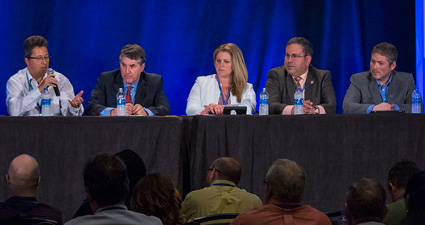Presentation Abstract
A Unified Interface for Managing Disparate Model-Based Systems Engineering Tools
An ongoing challenge confronted during the design of new defense systems is the need for a modeling approach that can support the design, analysis, verification, and validation of a system of interest in a consistent, integrated, and adjustable manner. Model-Based Systems Engineering (MBSE) is a relatively recent systems engineering methodology that provides a powerful framework for overcoming this challenge. Due to its relative infancy as a discipline, stakeholders are in need of methods that reduce the complexity of utilizing MBSE tools and languages for system design.
In MBSE practice, SysML diagrams are commonly used to express relationships between system components, parts, properties, and attributes. Interacting with these diagrams requires different sets of tools depending on the desired level of interaction. Software such as PowerPoint, Excel, and DOORS can explicitly identify and communicate dependencies within the system, but are inefficient and time-consuming to use to update, fix, or alter the system. Software such as Project, Python, and Tableau excel at making rapid changes to system objects, but are limited when attempting to identify explicit relationships within the system – a shortcoming that prevents modelers from verifying and validating the system design against all requirements. The ideal approach is a single interface that combines the strengths of both types of tools to manage SysML diagrams.
This presentation demonstrates how CAMEO, Excel, XML, and Object Oriented Programming are combined and used to store data and information, manage interaction with the MBSE tools, and facilitate manipulation of the model. Modelers and analysts are able to examine and interact with the system in ways that allow every relationship between components, parts, properties, and attributes to be identified while also enabling updates and changes to be made easily and rapidly. The interface facilitates collaboration between stakeholders when working together on a system of interest allowing them to take full advantage of MBSE tools and techniques.

